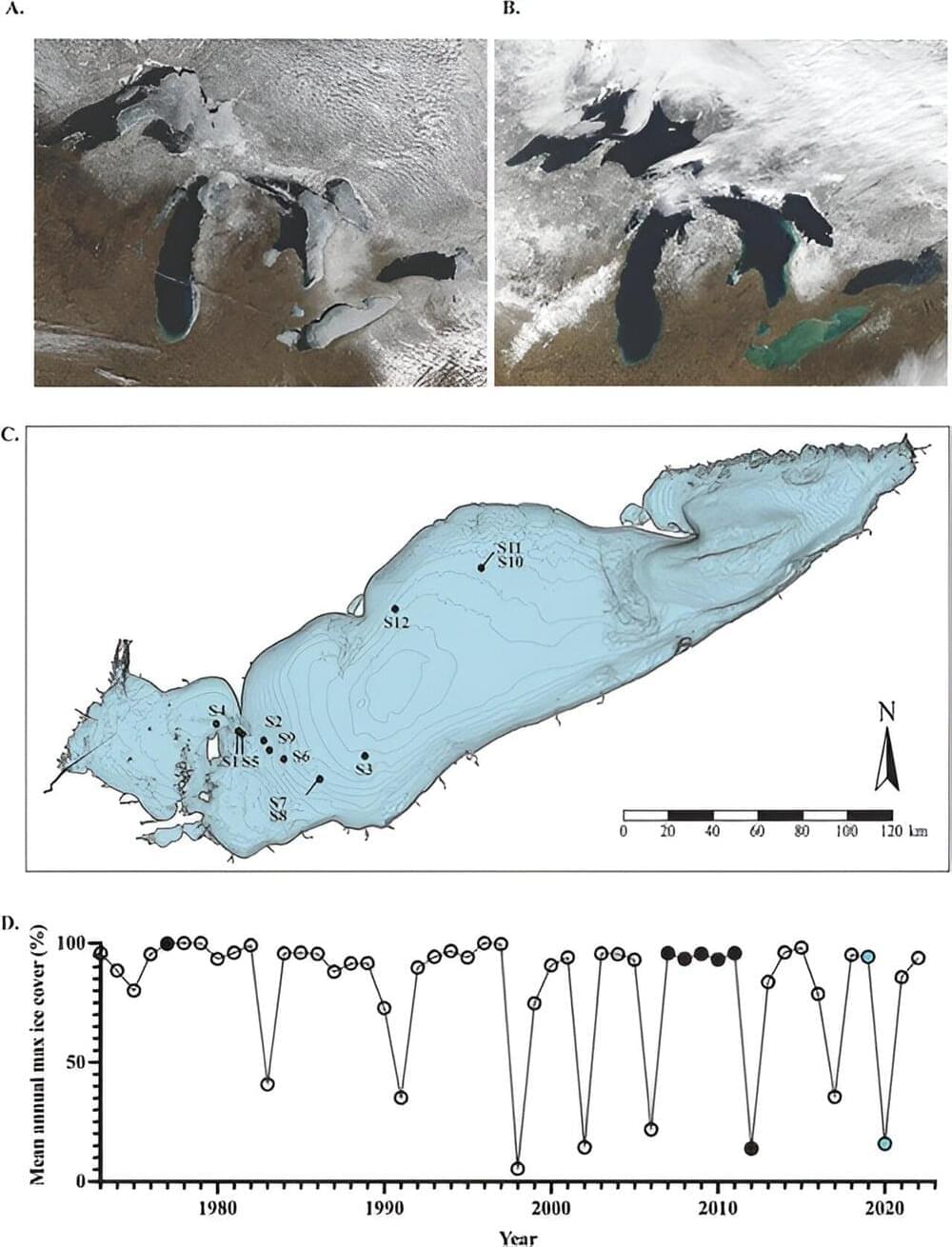The advanced artificial intelligence model powering Copilot’s Pro tier wasn’t free to all until now.




Hydrogen gas is a clean fuel. It burns with oxygen in the air to provide energy with no CO2. Hydrogen is a key to sustainable energy for the future. Though humans are just now coming to realize the benefits of hydrogen gas (H2 in chemical shorthand), microbes have known that H2 is a good fuel for as long as there has been life on Earth. Hydrogen is ancient energy.

A small research group from the University of Michigan has developed a three-legged skating/shuffling robot called SKOOTR that rolls as it walks, can move along in any direction and can even rise up to overcome obstacles.
The idea for the SKOOTR – or SKating, Omni-Oriented, Tripedal Robot – project came from assistant professor Talia Y. Moore at the University of Michigan’s Evolution and Motion of Biology and Robotics (EMBiR) Lab.
“I came up with this idea as I was rolling around on my office chair between groups of students,” said Moore. “I realized that the passively rolling office chair could easily spin in any direction, and I could use my legs to perform a variety of maneuvers while staying remarkably stable. I realized that this omnidirectional maneuverability is similar to how brittle stars change directions while swimming.”

WASHINGTON, March 19 (Reuters) — SpaceX has started selling satellite lasers, which are used for speedy in-space communications, to other satellite firms, company President Gwynne Shotwell said at a conference on Tuesday.
SpaceX’s thousands of Starlink satellites in low-Earth orbit use inter-satellite laser links to pass data between one another in space at the speed of light, allowing the network to offer broader internet coverage around the world with fewer ground stations.
Shotwell, speaking on a panel at the Satellite industry conference in Washington, said SpaceX as a supplier will sell that technology to other companies.

Researchers have developed a revolutionary sensor capable of detecting chemical warfare agents without wires, representing a major advancement in technology for public safety. This innovative device, capable of identifying substances like dimethyl methylphosphonate (DMMP), offers a new level of efficiency and reliability in monitoring and responding to chemical threats, without the need for direct power sources or physical connections.
The urgent need for advanced detection of chemical warfare agents (CWAs) to ensure global security has led to the development of a novel gas sensor. This sensor is distinguished by its rapid response, high sensitivity, and compact size, crucial for the early detection of CWAs. Accurate detection and monitoring of CWAs are vital for effective defense operations, both military and civilian. Due to the hazardous nature of CWAs, research is typically limited to authorized laboratories using simulants that mimic CWAs’ chemical structure without their toxic effects.
Older people may be at greater risk of developing pancreatic cancer and have poorer prognoses because of age-related changes in cells in the pancreas called fibroblasts, according to research led by investigators from the Johns Hopkins Kimmel Cancer Center, the Johns Hopkins Bloomberg School of Public Health and the Bloomberg~Kimmel Institute for Cancer Immunotherapy.
The study, published online Feb. 8 in Cancer Research, provides clues as to why pancreatic cancer is more common and aggressive in older people. It may also help scientists develop new therapeutic approaches for this difficult-to-treat cancer. The study showed that aging alters fibroblasts in ways that enable them to promote pancreatic cancer tumor growth.
“Older fibroblasts release proteins that directly affect pancreatic cancer cells and ultimately lead to the growth and spread of pancreatic cancer tumors,” says the study’s lead author, Daniel Zabransky, M.D., Ph.D., assistant professor of oncology at the Johns Hopkins University School of Medicine. “The younger fibroblasts did not have these capabilities. We think this is a key reason why we see pancreatic cancer more commonly in older patients.”

Discover why 4,500+ pros recommend Nutrafol. Use code WAI at https://nutrafol.com/ for $10 off your first month!
OUT NOW!!! IFT3 Shirt: https://whataboutit.myspreadshop.com/.…
The third Starship launched! How did it go? Does anything require repairs, and why did it tumble? Dream Chaser is gearing up for the launch, and ABL Space is back in action!
#SpaceX #starship #elonmusk #starbase.
▶️Patreon: https://www.wai.to/patreon.
▶️WAI Hub: https://www.whataboutit.space.
▶️Redline Helicopters: https://wai.to/redlineheli.
▶️Merch Store US: https://whataboutit.myspreadshop.com/
▶️Merch Store EU: https://whataboutit.myspreadshop.de/
▶️WAI Orbit: In collaboration with our friends at SkyFi: / skyfiapp.
▶️X (Twitter): https://www.x.com/FelixSchlang.
▶️Instagram: / felixschlang.
▶️Facebook: / waispace.
▶️WAI Spotify Playlist: https://spoti.fi/39tmULH
Editing: John Young, Alex Potvin, Stefanie Schlang.